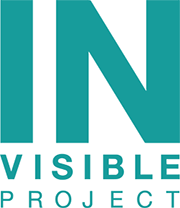The Never-Ending Battle for Oxygen Coverage for Cluster Headache
By Ashley Hattle , author, Cluster Headaches: A Guide to Surviving One of the Most Painful Conditions Known to Man
Imagine if all you needed was oxygen—the gas floating around in our air—to relieve one of the most painful conditions known to humankind, but obtaining it at an affordable cost was impossible.
Unfortunately, that is the reality for most cluster headache patients across the United States. Cluster headaches, nicknamed suicide headaches, are a rare type of headache disorder. According to a 2018 study from the University of West Georgia, patients often say they’re worse than any other pain they’ve ever experienced, including kidney stones, pancreatitis, and getting shot.
Despite evidence that high-flow oxygen is the safest and most effective way to stop a cluster attack, the Centers for Medicare and Medicaid Services (CMS) doesn’t deem it a necessary treatment for cluster attacks. Private insurers often base their coverage on Medicare and Medicaid, meaning patients with any of the most notable insurance providers are on their own for home oxygen as well. For years, patient advocates and headache specialists have increased pressure on CMS to change its policy in regards to oxygen for cluster patients. A Headache: The Journal of Head and Face Pain study found that patients with chronic cluster headache spend more than $5,000, while those with episodic cluster headache average $1,000 or more per year.
That’s a high out-of-pocket price for someone with a debilitating condition that likely takes them away from work. Patients often resort to imperfect solutions like welder’s oxygen (which may contain trace elements from chemicals) or treatments that come with serious side effects.
Unrealistic solutions
CMS representatives met in February 2020 with three cluster headache advocates, Robert Shapiro, MD, PhD, FAHS, a headache specialist and founder of Headache on the Hill; and Eileen Brewer and Robert Wold, president and executive director of the nonprofit Clusterbusters, respectively. CMS’s recommendation: patients should go to their nearest emergency room (ER) for oxygen.
But this doesn’t line up with the reality of cluster headache, which can occur multiple times a day for months on end and often happens in the middle of the night. Will the treating physician know what cluster headaches are or how to treat them? Will the patient even be seen in time to treat the current attack? What about the cost of that hospital trip?
“After advocating for our patient community for over 25 years and the last 10 years on this particular oxygen issue, I’ve found the most frustrating aspect is the slow pace of change,” says Wold. “The fact that lives are being lost and suffering multiplied, sadly, seem to add no motivation to move swiftly by those that can.”
Ignoring the evidence
In a 2019 article in Practical Neurology, experts said that “Level A” treatment for cluster headache is high-flow oxygen at a rate of 12-15 liters per minute through a non-rebreather mask, which can typically abort an attack within 15 minutes. They classified Level A treatments as those that have had at least two Class I studies with consistent results.
In fact, oxygen therapy for cluster headaches has enough evidence that it is endorsed as first-line treatment by the American Headache Society, American Academy of Neurology, International Headache Society, and the European Federation of Neurological Societies. Any qualified headache specialist prescribes high-flow oxygen immediately after making a cluster headache diagnosis.
CMS believes this is not enough data, despite the hundreds of pages that CMS has been provided on evidence of safety and efficacy, Brewer says.
CMS representatives claim that they need more clinical trial data and want a more extensive scale trial in Medicare populations, placing the burden of proof on the patient community. That is troublesome because cluster headache is rare to begin with: it affects one in 1,000 people. Combine that with the narrow scope of Medicare patients—individuals who are over 65 years old or are considered permanently disabled—and finding sufficient trial participants becomes increasingly difficult. At the same time, private institutions are unlikely to fund a study on a treatment that is already proven, affects a small population, and wouldn’t result in financial gain.
Patients mobilize during a 30-day comment period for CMS determination
CMS first issued its determination on home oxygen for cluster headaches in 2006. Clusterbusters, the Association of Headache Disorders Advocacy (AHDA) and others have been fighting for coverage since. CMS denied a 2011 appeal, and another request was submitted in February 2019. Eighteen months later, CMS opened a public comment period without any notice, giving patients and advocacy organizations just 30 days to provide new research and personal stories about how effective and safe oxygen therapy is in aborting cluster headaches.
The patient community accomplished a remarkable feat in those 30 days, with patients, neurologists, oxygen suppliers, caregivers and countless headache organizations coming together to provide 157 letters of support and 257 signatures.
As of publication of this article, the patient community is still waiting for a final decision from CMS.
“We realize every day that passes without this coverage equates to more people being harmed,” says Katie MacDonald, AHDA director of federal policy. “We remain hopeful that the advocacy from our community leads to much-needed change.”

